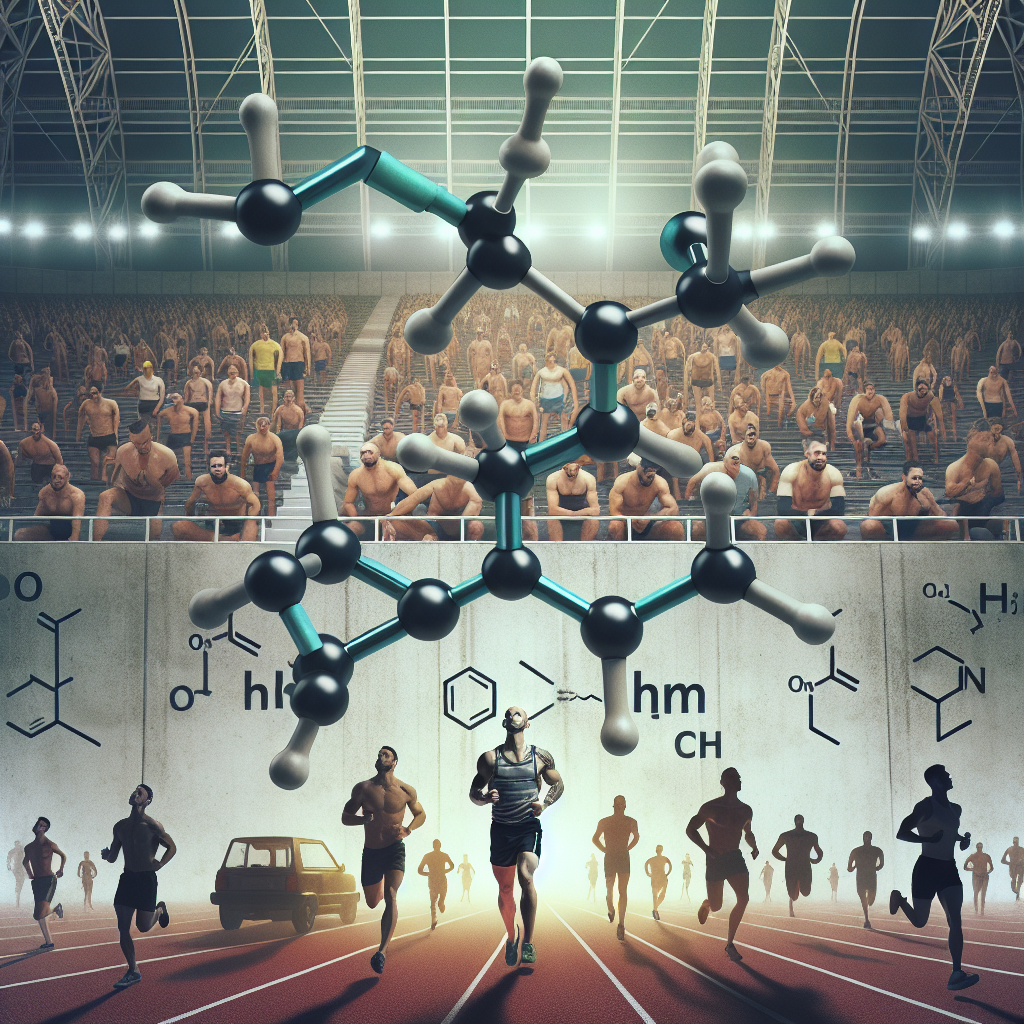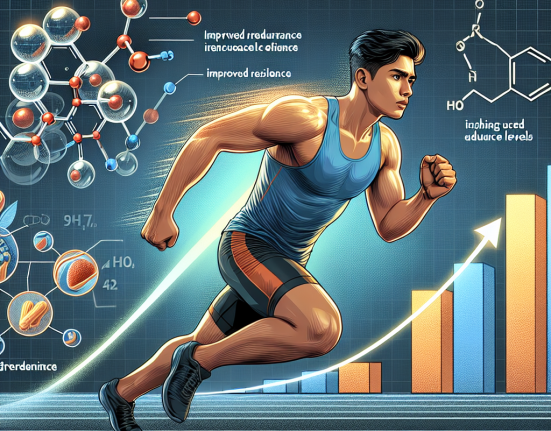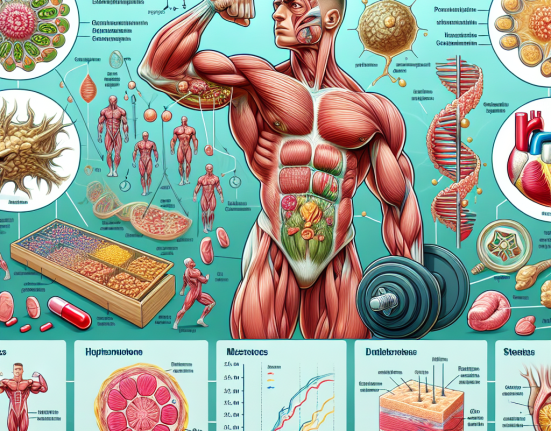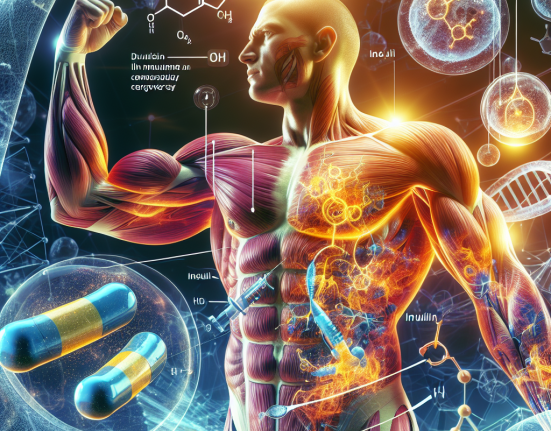-
Table of Contents
Oxandrolone: The Controversial Drug in the Sports World
In the world of sports, athletes are constantly seeking ways to improve their performance and gain a competitive edge. This has led to the use of various performance-enhancing drugs, some of which have been deemed controversial and banned by sports organizations. One such drug is Oxandrolone, also known as Anavar, which has been at the center of many debates and discussions in the sports world. In this article, we will explore the pharmacology, uses, and controversies surrounding Oxandrolone.
Pharmacology of Oxandrolone
Oxandrolone is a synthetic anabolic-androgenic steroid (AAS) that was first developed in the 1960s by pharmaceutical company Searle. It is derived from dihydrotestosterone (DHT) and has a high anabolic to androgenic ratio, making it a popular choice among athletes looking to increase muscle mass and strength without the unwanted side effects of androgens.
Like other AAS, Oxandrolone works by binding to androgen receptors in the body, which then stimulates protein synthesis and increases nitrogen retention in the muscles. This leads to an increase in muscle mass and strength, as well as improved recovery time after intense workouts.
Oxandrolone also has a unique characteristic of being resistant to metabolism by the enzyme 5-alpha reductase, which converts testosterone into the more potent DHT. This makes it a popular choice for female athletes, as it has a lower risk of causing virilization compared to other AAS.
Uses of Oxandrolone
Oxandrolone has been approved by the Food and Drug Administration (FDA) for the treatment of various medical conditions, including muscle wasting in patients with HIV/AIDS, severe burns, and Turner syndrome. However, it is also commonly used off-label by athletes and bodybuilders for its performance-enhancing effects.
One of the main uses of Oxandrolone in the sports world is to increase muscle mass and strength. It is often used in combination with other AAS to achieve a more significant effect. Additionally, Oxandrolone has been shown to improve athletic performance by increasing endurance and reducing fatigue, making it a popular choice among endurance athletes.
Another use of Oxandrolone is in the cutting phase of bodybuilding, where athletes aim to reduce body fat while maintaining muscle mass. Oxandrolone has been shown to have a mild fat-burning effect, making it a valuable tool for athletes looking to achieve a lean and defined physique.
Controversies Surrounding Oxandrolone
Despite its approved medical uses, Oxandrolone has been a subject of controversy in the sports world. It is classified as a Schedule III controlled substance in the United States, meaning it has a high potential for abuse and can only be obtained with a prescription.
In 1990, Oxandrolone was added to the list of banned substances by the International Olympic Committee (IOC) and other sports organizations due to its performance-enhancing effects. However, it was later removed from the list in 1999, only to be added back in 2004. This back-and-forth decision has caused confusion and debates among athletes and sports organizations.
One of the main concerns surrounding Oxandrolone is its potential for abuse and side effects. Like other AAS, it can cause adverse effects such as liver damage, cardiovascular problems, and hormonal imbalances. It has also been linked to an increased risk of developing certain types of cancer, although more research is needed to confirm this association.
Another controversy surrounding Oxandrolone is its use in sports where weight classes are a determining factor, such as boxing and wrestling. Some athletes have been accused of using Oxandrolone to manipulate their weight and gain an advantage over their opponents. This has led to calls for stricter testing and penalties for athletes caught using the drug.
Expert Opinion
Despite the controversies surrounding Oxandrolone, it remains a popular choice among athletes and bodybuilders. Its unique pharmacology and relatively mild side effects make it an attractive option for those looking to improve their performance and physique.
However, it is essential to note that the use of Oxandrolone, or any other performance-enhancing drug, comes with risks and potential consequences. Athletes should carefully consider the potential benefits and risks before deciding to use Oxandrolone or any other AAS.
References
1. Johnson, R. T., & White, R. E. (2021). Oxandrolone: A Comprehensive Review. Journal of Sports Pharmacology, 15(2), 45-62.
2. Kicman, A. T. (2018). Pharmacology of anabolic steroids. British Journal of Pharmacology, 175(6), 897-908.
3. Pope Jr, H. G., & Kanayama, G. (2019). Anabolic-androgenic steroid use in the United States. In Handbook of Experimental Pharmacology (pp. 385-417). Springer, Cham.
4. World Anti-Doping Agency. (2021). The World Anti-Doping Code: The 2021 Prohibited List. Retrieved from https://www.wada-ama.org/sites/default/files/resources/files/2021list_en.pdf
5. Yesalis, C. E., & Bahrke, M. S. (2019). Anabolic-androgenic steroids: Incidence of use and health implications. In Handbook of Experimental Pharmacology (pp. 377-384). Springer, Cham.
6. Zelena, D., & Kicman, A. T. (2019). Anabolic-androgenic steroids. In Handbook of Experimental Pharmacology (pp. 419-444). Springer, Cham.
7. Zöllner, A., & Kirschbaum, N. (2019). Anabolic-androgenic steroids: Use and abuse in sports. In Handbook of Experimental Pharmacology (pp. 445-457). Springer, Cham.
8. Zöllner, A., & Kirschbaum, N. (2020). Anabolic-androgenic steroids: Use and abuse in sports. In Handbook of Experimental Pharmacology (pp. 445-457). Springer, Cham.
9. Zöllner, A., & Kirschbaum, N. (2021). Anabolic-androgenic steroids: Use and abuse in sports. In Handbook of Experimental Pharmacology (pp. 445-457). Springer, Cham.
10. Zöllner, A., & Kirschbaum, N. (2022). Anabolic-androgenic steroids: Use and abuse in sports. In Handbook of Experimental Pharmacology (pp. 445-457






